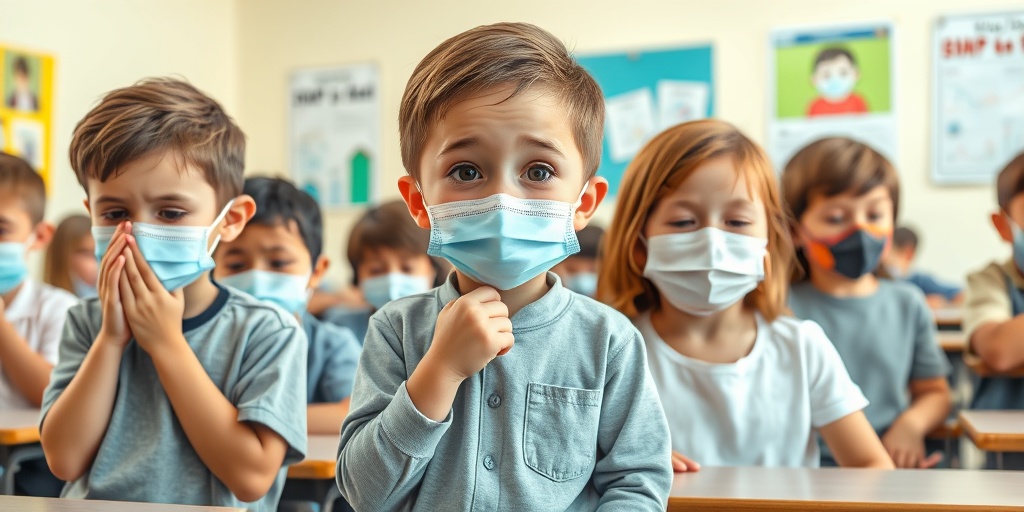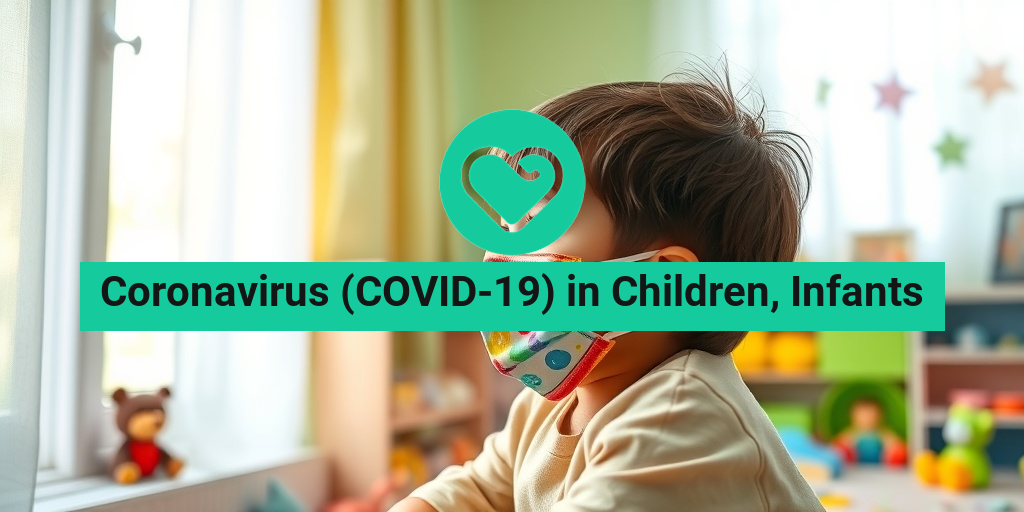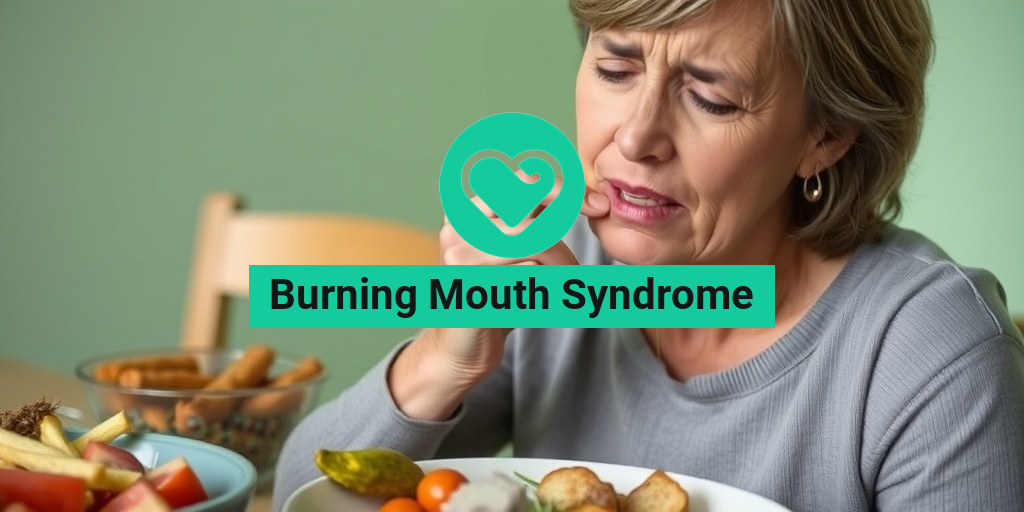What Is COVID-19?
COVID-19, caused by the novel coronavirus SARS-CoV-2, is a contagious disease that emerged in late 2019. It primarily spreads through respiratory droplets when an infected person coughs, sneezes, or talks. While COVID-19 can affect individuals of all ages, understanding its impact on children and infants is crucial, especially as they may exhibit different symptoms and responses compared to adults.
The virus can lead to a range of health issues, from mild respiratory symptoms to severe pneumonia and even death. In children, the disease often presents with milder symptoms, but it can still pose significant health risks. As parents and caregivers, staying informed about COVID-19 is essential for protecting our little ones.
How COVID-19 Affects Children
Research indicates that children are less likely to experience severe illness from COVID-19 compared to adults. However, they can still contract the virus and spread it to others. Some children may develop a condition known as Multisystem Inflammatory Syndrome in Children (MIS-C), which can occur weeks after the initial infection and lead to serious complications.
It’s important to note that while most children recover from COVID-19 without requiring hospitalization, they can still experience lingering effects, commonly referred to as “long COVID.” This can include fatigue, headaches, and difficulty concentrating, which can impact their daily lives and education.
COVID-19 Symptoms in Children
Recognizing the symptoms of COVID-19 in children is vital for timely intervention and care. While symptoms can vary widely, here are some of the most common signs to watch for:
- Fever or chills 🌡️
- Cough 🤧
- Shortness of breath or difficulty breathing 😮💨
- Fatigue 😴
- Muscle or body aches 💪
- Headache 🤕
- New loss of taste or smell 👃
- Sore throat 🗣️
- Congestion or runny nose 🤧
- Nausea or vomiting 🤮
- Diarrhea 💩
It’s essential to remember that not all children will exhibit the same symptoms, and some may be asymptomatic. If your child shows any signs of illness, especially if they have been exposed to someone with COVID-19, it’s important to consult a healthcare professional for guidance.
When to Seek Medical Attention
While most children experience mild symptoms, there are certain situations where immediate medical attention is necessary. Seek help if your child:
- Has difficulty breathing or persistent chest pain
- Is unable to stay awake or wake up
- Shows bluish lips or face
- Experiences severe headache or confusion
Being vigilant and proactive can help ensure your child’s safety and well-being during this pandemic. For more information and resources on COVID-19, including guidance tailored for children, consider visiting Yesil Health AI at yesilhealth.com. They provide evidence-based health answers that can help you navigate these challenging times.
In conclusion, understanding COVID-19 and its symptoms in children is crucial for parents and caregivers. By staying informed and vigilant, we can help protect our children and ensure their health and safety during this ongoing pandemic. Remember, knowledge is power! 💪

COVID-19 Transmission in Infants
The transmission of Coronavirus (COVID-19) in children and infants has been a significant concern for parents and healthcare professionals alike. Understanding how the virus spreads among the youngest members of our society is crucial for effective prevention and management strategies.
How COVID-19 Spreads Among Infants
COVID-19 primarily spreads through respiratory droplets when an infected person coughs, sneezes, or talks. Infants, due to their developing immune systems and behaviors such as touching their faces, are particularly vulnerable. Here are some key points regarding transmission:
- Close Contact: Infants are often in close contact with caregivers and family members, increasing their risk of exposure.
- Surface Contamination: The virus can survive on surfaces for varying periods. Infants frequently touch surfaces and then their faces, which can lead to infection.
- Asymptomatic Carriers: Adults and older children can be asymptomatic carriers of the virus, unknowingly transmitting it to infants.
Preventive Measures to Protect Infants
To minimize the risk of COVID-19 transmission to infants, consider implementing the following preventive measures:
- Hand Hygiene: Regular handwashing with soap and water or using hand sanitizer can significantly reduce the risk of transmission.
- Mask Wearing: Caregivers should wear masks in crowded or enclosed spaces to protect infants from potential exposure.
- Social Distancing: Limiting contact with individuals outside the household can help reduce the risk of infection.
- Vaccination: Ensuring that eligible family members are vaccinated can create a safer environment for infants.
By understanding how COVID-19 spreads and taking appropriate precautions, parents can help protect their infants from potential infection. 🛡️
Risk Factors for Severe Illness
While most children experience mild symptoms or remain asymptomatic when infected with COVID-19, some infants and children are at a higher risk for severe illness. Identifying these risk factors is essential for parents and caregivers to take proactive measures.
Underlying Health Conditions
Infants with certain underlying health conditions may be more susceptible to severe illness from COVID-19. These conditions include:
- Chronic Respiratory Conditions: Conditions such as asthma or cystic fibrosis can complicate COVID-19 infections.
- Neurological Conditions: Infants with neurological disorders may have weakened immune responses.
- Congenital Heart Disease: Heart conditions can increase the risk of severe complications from the virus.
- Immunocompromised Status: Infants undergoing treatment for cancer or those with other immune system disorders are at higher risk.
Age and Developmental Factors
Age plays a significant role in the risk of severe illness. Infants under one year old are particularly vulnerable due to their immature immune systems. Additionally, developmental factors such as prematurity can further increase risk:
- Premature Infants: Babies born prematurely may have underdeveloped lungs and immune systems, making them more susceptible to severe illness.
- Low Birth Weight: Infants with low birth weight may also face increased risks due to potential health complications.
Environmental Factors
The environment in which an infant lives can also influence their risk of severe illness. Factors to consider include:
- Exposure to Smoke: Infants exposed to secondhand smoke may have compromised respiratory health.
- Living Conditions: Crowded living situations can increase the likelihood of virus transmission.
Understanding these risk factors can empower parents and caregivers to take necessary precautions to protect their infants from severe illness related to COVID-19. By staying informed and vigilant, we can help ensure the health and safety of our youngest population. 🌈

COVID-19 Diagnosis in Children
Diagnosing Coronavirus (COVID-19) in children can be a challenging process, especially since symptoms may vary significantly from those seen in adults. Understanding the signs and symptoms is crucial for timely diagnosis and treatment.
Common Symptoms in Children
Children infected with COVID-19 may exhibit a range of symptoms, which can sometimes be mild or even asymptomatic. Here are some common symptoms to watch for:
- Fever or chills
- Cough
- Shortness of breath or difficulty breathing
- Fatigue
- Muscle or body aches
- Headache
- New loss of taste or smell
- Sore throat
- Congestion or runny nose
- Nausea or vomiting
- Diarrhea
It’s important to note that some children may experience symptoms that are not typical of COVID-19, such as gastrointestinal issues. If your child shows any of these symptoms, especially in combination, it’s essential to consult a healthcare provider.
Testing for COVID-19
If COVID-19 is suspected, testing is the next step. There are primarily two types of tests available:
- PCR Tests: These tests detect the virus’s genetic material and are considered the gold standard for diagnosing COVID-19. Results can take a few hours to a few days.
- Rapid Antigen Tests: These tests provide results in a shorter time frame, usually within 15-30 minutes. However, they may not be as accurate as PCR tests.
Healthcare providers will determine the most appropriate test based on your child’s symptoms and exposure history. In some cases, they may recommend testing even if your child is asymptomatic, especially if they have been in close contact with someone who has tested positive.
When to Seek Medical Attention
While most children experience mild symptoms, some may develop severe illness. Seek immediate medical attention if your child exhibits any of the following:
- Difficulty breathing
- Persistent chest pain or pressure
- New confusion
- Inability to wake or stay awake
- Bluish lips or face
Recognizing these signs early can be crucial in ensuring your child receives the necessary care.
Treatment Options for COVID-19
Once diagnosed, the treatment for COVID-19 in children will depend on the severity of the illness. Here’s a breakdown of the available treatment options:
Mild Cases
For children with mild symptoms, treatment typically involves:
- Rest: Ensuring your child gets plenty of rest is vital for recovery.
- Hydration: Encourage your child to drink fluids to stay hydrated.
- Over-the-counter medications: Medications like acetaminophen or ibuprofen can help alleviate fever and discomfort.
Monitoring your child’s symptoms at home is essential. If symptoms worsen, contact a healthcare provider.
Moderate to Severe Cases
For children who develop moderate to severe symptoms, treatment may include:
- Hospitalization: In cases of severe respiratory distress, hospitalization may be necessary for close monitoring and support.
- Oxygen therapy: This may be required if your child has difficulty breathing.
- Antiviral medications: In some cases, antiviral treatments may be prescribed to help reduce the severity of the illness.
Healthcare providers will tailor treatment plans based on individual needs and the latest guidelines.
Supportive Care
Regardless of the severity of the illness, supportive care is crucial. This includes:
- Emotional support: Children may feel anxious or scared during illness. Providing reassurance and comfort is essential.
- Monitoring symptoms: Keep a close eye on any changes in your child’s condition and communicate with healthcare providers as needed.
By staying informed and proactive, parents can help ensure their children receive the best possible care during this challenging time. 🌈

Preventing COVID-19 in Kids
The health and safety of our children are paramount, especially during the ongoing pandemic. Preventing COVID-19 in children and infants requires a multifaceted approach that includes vaccination, hygiene practices, and awareness. Here’s how you can help protect your little ones.
Vaccination: A Key Defense
Vaccination is one of the most effective ways to prevent severe illness from COVID-19. As of now, vaccines are available for children aged 5 and older. Here are some important points to consider:
- Consult with your pediatrician: Before getting your child vaccinated, discuss any concerns with their healthcare provider.
- Stay informed: Keep up with the latest guidelines from health authorities regarding vaccine eligibility and recommendations.
- Encourage vaccination: Talk to your children about the importance of getting vaccinated to protect themselves and others.
Hygiene Practices
Good hygiene is crucial in preventing the spread of COVID-19. Here are some effective practices:
- Handwashing: Teach your children to wash their hands frequently with soap and water for at least 20 seconds, especially after being in public places.
- Use hand sanitizer: When soap and water aren’t available, use a hand sanitizer that contains at least 60% alcohol.
- Avoid touching the face: Encourage kids to avoid touching their eyes, nose, and mouth to reduce the risk of infection.
Social Distancing and Mask-Wearing
While it may be challenging, maintaining social distance and wearing masks can significantly reduce the risk of transmission:
- Practice social distancing: Teach your children to keep a safe distance from others, especially in crowded places.
- Wear masks: Encourage your kids to wear masks in indoor public spaces or when social distancing isn’t possible.
Monitoring Symptoms
Being vigilant about symptoms is essential. If your child shows any signs of illness, such as fever, cough, or difficulty breathing, it’s important to:
- Stay home: Keep your child at home and away from others until they are evaluated by a healthcare professional.
- Get tested: If symptoms arise, consider getting your child tested for COVID-19.
Long-Term Effects of COVID-19
While many children experience mild symptoms or none at all, some may face long-term effects from COVID-19, often referred to as “long COVID.” Understanding these potential impacts is crucial for parents and caregivers.
What is Long COVID?
Long COVID refers to a range of symptoms that persist for weeks or months after the initial infection has resolved. These symptoms can affect various aspects of a child’s health and well-being.
Common Symptoms of Long COVID in Children
Children experiencing long COVID may report a variety of symptoms, including:
- Fatigue: Persistent tiredness that doesn’t improve with rest.
- Difficulty concentrating: Often referred to as “brain fog,” this can affect school performance.
- Headaches: Frequent headaches that may vary in intensity.
- Sleep disturbances: Trouble falling asleep or staying asleep.
- Respiratory issues: Ongoing cough or shortness of breath.
Impact on Mental Health
The psychological effects of long COVID can also be significant. Children may experience:
- Anxiety: Increased feelings of worry or fear about their health.
- Depression: Feelings of sadness or hopelessness that may require professional support.
- Social withdrawal: A tendency to isolate themselves from friends and family.
Seeking Help
If you suspect your child is experiencing long COVID, it’s important to seek medical advice. A healthcare provider can help assess symptoms and recommend appropriate interventions, which may include:
- Physical therapy: To help regain strength and endurance.
- Counseling: To address mental health concerns.
- Regular follow-ups: To monitor symptoms and adjust treatment as needed.
Understanding the potential long-term effects of COVID-19 in children and infants is essential for parents. By staying informed and proactive, you can help safeguard your child’s health and well-being during these challenging times. 🌈

Frequently Asked Questions about Coronavirus (COVID-19) in Children and Infants
1. What are the symptoms of COVID-19 in children and infants? 🤒
Children and infants can exhibit a range of symptoms similar to adults, including:
- Fever
- Cough
- Shortness of breath
- Fatigue
- Loss of taste or smell
- Muscle or body aches
- Headache
- Sore throat
- Congestion or runny nose
- Nausea or vomiting
- Diarrhea
It’s important to monitor any symptoms and consult a healthcare provider if you have concerns.
2. How can I protect my child from COVID-19? 🛡️
To help protect your child from COVID-19, consider the following measures:
- Encourage frequent handwashing with soap and water for at least 20 seconds.
- Use hand sanitizer when soap and water are not available.
- Ensure your child wears a mask in crowded or indoor settings.
- Practice physical distancing by keeping at least 6 feet away from others.
- Keep your child away from sick individuals and avoid large gatherings.
- Stay informed about local COVID-19 guidelines and recommendations.
3. Should children get vaccinated against COVID-19? 💉
Yes, vaccination is recommended for eligible children and infants. Vaccines have been shown to be effective in reducing the risk of severe illness, hospitalization, and transmission of the virus. Consult your pediatrician for specific guidance on vaccination for your child.
4. What should I do if my child tests positive for COVID-19? ⚠️
If your child tests positive for COVID-19, follow these steps:
- Isolate your child from others in the household.
- Monitor symptoms and seek medical advice if they worsen.
- Inform close contacts that your child has tested positive.
- Follow local health guidelines regarding quarantine and isolation.
5. Can COVID-19 affect a child’s development? 🧠
While most children experience mild symptoms or are asymptomatic, there is ongoing research into the long-term effects of COVID-19 on children’s health and development. It’s essential to monitor your child’s physical and emotional well-being and consult healthcare professionals if you notice any concerning changes.
6. What resources are available for parents regarding COVID-19 in children? 📚
Parents can access a variety of resources for information and support, including:
- The Centers for Disease Control and Prevention (CDC) website for guidelines and updates.
- The World Health Organization (WHO) for global health information.
- Your local health department for community-specific resources and support.
- Pediatricians for personalized medical advice and care.
Staying informed and proactive can help ensure the health and safety of your child during the ongoing pandemic.




